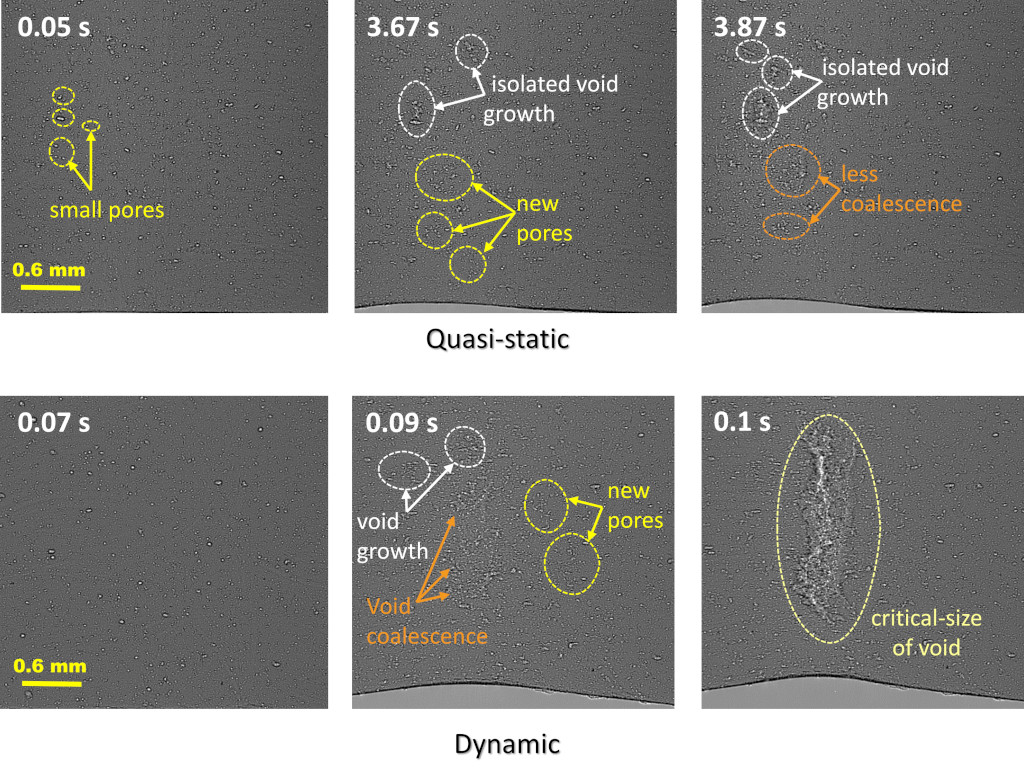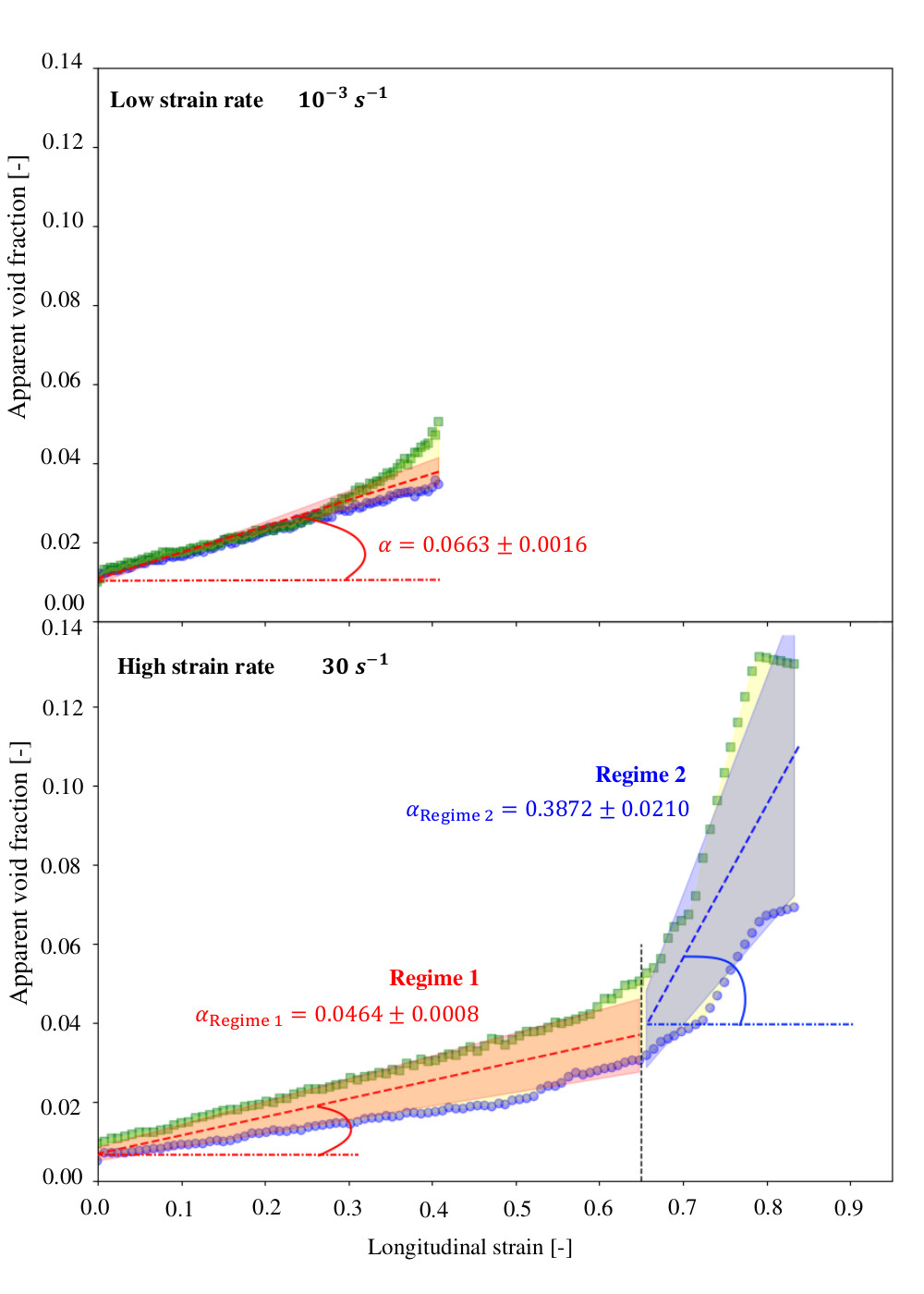Visualising Ductile Failure with Ultra-High-Speed X-Ray Imaging
The aim of this research topic is to shed light on the ductile failure mechanism of metals. The ductile failure model rests on the assumption that shear and tensile strains nucleate voids which grow under subsequent deformation to form pores. Failure is understood as the interaction of pores, leading to a macroscopic crack. Our research interest is to directly measure the time-dependent evolution of void nucleation and pore growth in-situ, i.e. directly during an experiment.
To this end, tensile tests at low and high strain rates are perfomted using High-Speed X-ray Phase Contrast Imaging (XPCI) at the European Synchrotron Radiation Facility (ESRF). This approach enables real-time, high-resolution visualization of void nucleation, growth, and coalescence, providing valuable insights into the effects of strain rate on void dynamics. Radiographic images from in-situ testing, shown in Figure 1, reveal distinct behavior depending on the applied strain rate. Initially, small pores are visible in both conditions. Quasi-static tests display gradual void nucleation and growth,while dynamic tests exhibit rapid nucleation, growth, and coalescence within a short time frame.To analyze these processes, segmented X-ray images were used to track individual voids over time with a Point-In-Polygon (PIP) test and a Euclidean Distance-based approach (ED). The Moving Least Squares (MLS) method was applied to determine local strain distributions around voids. Figure 2 illustrates the evolution of apparent void fraction with longitudinal strain. At low strain rates, void fraction increases steadily through isolated growth. In contrast, high strain rates show slow initial growth, transitioning to rapid coalescence beyond a critical strain, resulting in extensive internal damage.
 |
|---|
| Figure 1: radiographic image showing the evolution of voids under tensile strain. |
 |
|---|
| Figure 2: Graph depicting the relationship between apparent void fraction and strain. |
associated publications:
- Jakkula, P.; Cohen, A.; Lukić, B.; Levi-Hevroni, D.; Rack, A.; Ganzenmüller, G.; Hiermaier, S. Split Hopkinson Tension Bar and Universal Testing Machine for High-Speed X-ray Imaging of Materials under Tension. Instruments 2022, 6, 38. https://doi.org/10.3390/instruments6030038

